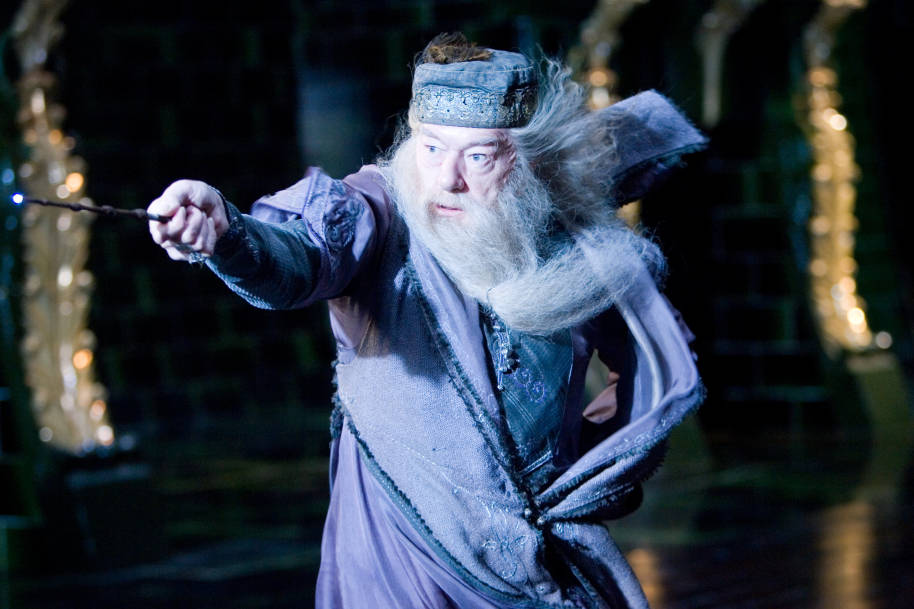Like so much in the Harry Potter books, symbolic meaning can be found in the smallest of details. By looking at folklore, the properties of British trees and Garrick Ollivander’s personal notes, we see how a wand reflects its owner’s personality and fate.
‘It’s really the wand that chooses the wizard, of course.’
Harry Potter and the Philosopher’s Stone
Yew and holly
It might seem odd at first that Harry and Voldemort shared ‘twin’ wand cores (phoenix feathers, both taken from none other than Fawkes), yet these characters did have a lot in common. Aside from Lord Voldemort’s connection to Harry as a Horcrux, giving them forced similarities such as the power of Parseltongue, they grew up in similar ways. They were both orphans raised by Muggles, both were unaware they were wizards for years, and – as they owned Peverell family heirlooms – probably blood-related. To understand their key differences, however, look no further than their wand woods.
The wand of yew is reputed to endow its possessor with the power of life and death.
‘Wand Woods’, Pottermore
Yew, the wood used in Voldemort’s wand, is poisonous. Every part of the tree (aside from the berry flesh) contains alkaloids that are fatal to humans. Like the yew, Voldemort brought death to many victims, while his beliefs, such as pure-blood supremacy, were equally toxic.
One interesting property of yew is that it remains poisonous after the tree has died. Similarly, Voldemort’s Horcruxes and Death Eaters linger on after his demise at Godric’s Hollow, poisoning minds and destroying lives.

Holly wands often choose owners who are engaged in some dangerous and often spiritual quest.
‘Wand Woods’, Pottermore
Harry’s wand could not be more different. Holly is a traditional symbol of luck, prosperity and protection from evil. It’s been used in celebration rituals throughout history including the Roman festival of Saturnalia, the Pagan Winter Solstice and, of course, Christmas.
Like holly, Harry repelled evil in the form of Voldemort and united the wizarding world in celebration as they toasted ‘The Boy Who Lived’.
Elder
Only a highly unusual person will find their perfect match in elder, and on the rare occasion when such a pairing occurs, I take it as certain that the witch or wizard in question is marked out for a special destiny.
‘Wand Woods’, Pottermore
Elder trees have a curious role in Druidic mythology. These sacred plants were believed to possess not only healing powers but also a link to the magical world. Cutting an elder or burning the wood was believed to anger the Mother Goddess and provoke her to seek revenge. This is a line from the Wiccan Rede: ‘Elder is the Lady’s Tree, burn it not or cursed ye be!’ It’s possible the legendary Elder Wand was cursed from the moment its wood was cut.
These instances of blessings and curses rang true with Albus Dumbledore, who held the Elder Wand for many years. Dumbledore was gifted with immense talent but equally cursed by a tragic family past. Once he understood the dangers of abusing power, the Elder Wand came into his possession: a powerful instrument which, when misused, quickly tured its owner into a target. Dumbledore’s special destiny, it seemed, was to use his wisdom to protect others from corruption.

Elm
The unfounded belief that only pure-bloods can produce magic from elm wands was undoubtedly started by some elm wand owner seeking to prove his own blood credentials.
‘Wand Woods’, Pottermore
Elms once dominated the English countryside, and the genus is estimated at 20 million years old. Elms symbolise a long and powerful lineage, so it’s unsurprising that their wands would be desirable to wizards who take pride in their family heritage. Lucius Malfoy owns one such wand, which is later surrendered to Lord Voldemort.
Unfortunately elm has several negative associations, particularly death and disease. Elm trees were once used to build coffins and are known to drop dead branches without warning. Dutch elm disease has wiped out millions of these trees worldwide and turned a once proud symbol into one of rot and decay. This echoes Lucius Malfoy’s fall from favour and suggests that some of his beliefs – such as his attitude to Muggles – might also be rotten at the core.

Oak
A wand for good times and bad, this is a friend as loyal as the wizard who deserves it.
‘Wand Woods’, Pottermore
Due to their size and longevity, oak trees have come to symbolise strength and survival. Oaks support more life forms than any other British trees, with each one providing food and shelter to hundreds of bugs, birds and other critters. Who do we picture when we think ‘tall, strong and a friend to animals’? Rubeus Hagrid, of course.
Apart from the obvious comparison with his physical size and strength, Hagrid showed remarkable endurance throughout many hardships. He lost family and friends, and was expelled from school, imprisoned in Azkaban and suffered a lifetime of prejudice due to his half-giant heritage. But he was nothing if not a survivor. His own oak wand may have been broken, but nothing could break Hagrid’s spirit and loyalty.
Speaking of which, the pieces would definitely not be found inside a certain pink umbrella.

